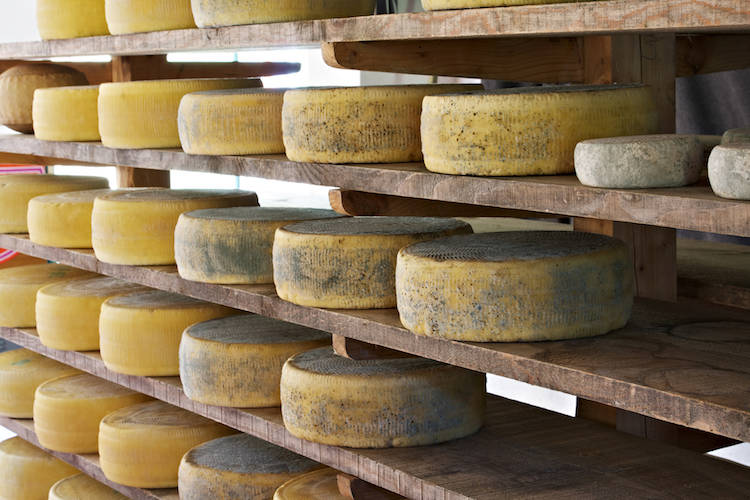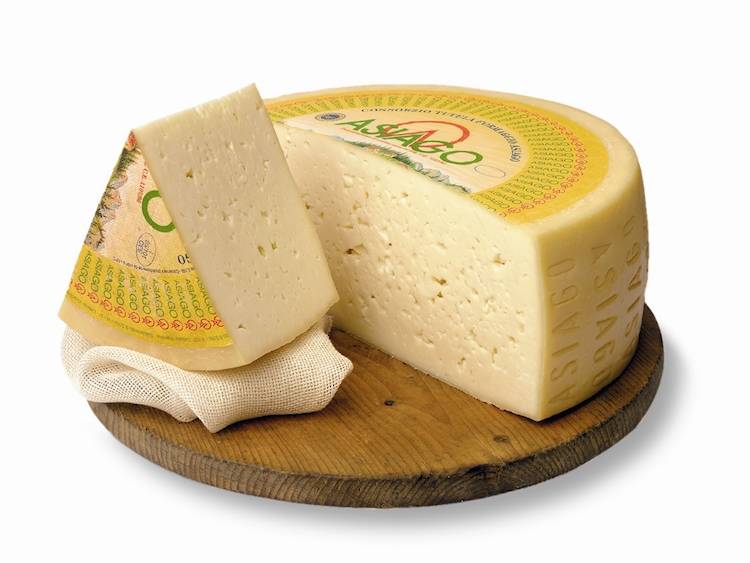Discover the World of Asiago
Asiago is a cow's milk cheese produced around the alpine area of the Asiago plateau in the regions of Veneto and Trentino-Alto Adige. There are different age varieties of asiago, ranging from soft, smooth, and fresh to hard, crumbly, and salty.
Asiago cheese has been produced for over a thousand years! The asiago cheese we know and love today probably tastes quite different from the original. Initially, sheep's milk cheese was used. Between the 10th and 15th century, sheep raising dominated the green pastures of the Asiago Plateau. Inhabitants of the mountainous are produced wool and, of course, many savory cheeses like asiago.
Around 1500 A.D., cattle began to gradually replace sheep, thanks to modern breeding techniques. As a consequence, farmers began replacing sheep's milk with cow's milk to make their cheeses, including asiago. Throughout the 19th century, the cheese became more popular as modern technology made it easier for other farmers to adopt the asiago cheesemaking technique. Soon, neighboring farms in the Trentino area had adopted the cheese, too.
In 1979, the Consorzio Tutela Formaggio Asiago was founded in Vicenza (a small city in the northern Veneto region) to guarantee the authenticity and quality of asiago cheese. (When we see the label "Asiago DOP" this means the cheese has been approved by the Consorzio.) Today the consortium represents more than 40 different asiago cheesemakers.
HOW IS ASIAGO MADE?
Well...it depends! Production methods vary for each type of asiago. There are two main categories of asiago cheese: Asiago Pressato ("pressed asiago") and Asiago d'Allevo ("ripened asiago").
ASIAGO PRESSATO
Asiago pressato is also known as asiago fresco, or "fresh asiago." This variety is produced from whole, pasteurized cow's milk from cattle that graze in low lying areas of the Asiago Plateau. The milk is heated together with enzymes to help it coagulate into a curd. After that, the curd is "pressed" (hence the name pressato) into a mold where it's wrapped, brined, and then left to age for 20 to 40 days. The resulting cheese is semi-soft with a creamy and smooth texture and large holes. It has a delicate, supple, and sweet taste with the aroma of fresh milk.
ASIAGO D'ALLEVO
On the other hand, Asiago d'Allevo is produced using raw milk from the Pezzata Nera and Bruno Alpina cows that graze in higher pastures. Unlike asiago pressato, both it's made from a mixture of whole milk and skim milk. The milk is heated, transformed into curd, and pressed into round molds before it is salted and aged. There are three different aging periods for Asiago d'Allevo: asiago mezzano (4 to 6 months), asiago vecchio (10 to 16 months), and asiago stravecchio (15 or more months). The longer the cheese ages, the harder, more yellow, and more intensely-flavored it becomes. Asiago mezzano has a sweet taste, while vecchio is more fragrant and bitter. Stravecchio is the most intense of all with a slightly piquant flavor.
HOW SHOULD YOUR SERVE ASIAGO?
Asiago Pressato can be sliced and served in salads or sandwiches. It's extremely versatile in the kitchen and can be melted over polenta, porcini mushrooms, or vegetables. It also works well in pasta, quiche, crepes, and arancini. Pair fresh asiago with a light white, rosè, or sparkling wine.
Aged asiago cheeses can be grated into soups, salads, pasta, polenta, and risotto. It is excellent served on its own alongside salumi or drizzled with honey, preserves, and marmalades. Note: The more mature the cheese, the more structured the wine should be.





































i-Italy
Facebook
Google+
This work may not be reproduced, in whole or in part, without prior written permission.
Questo lavoro non può essere riprodotto, in tutto o in parte, senza permesso scritto.